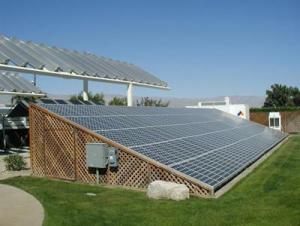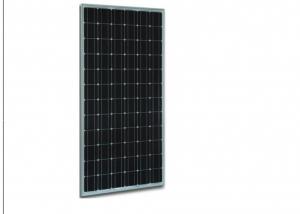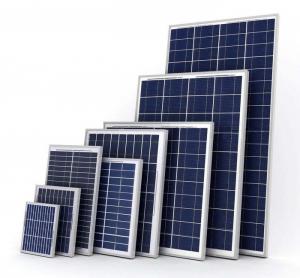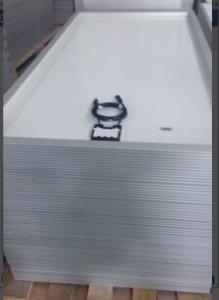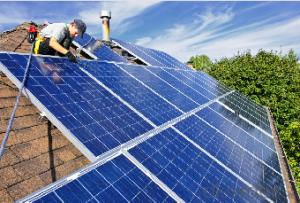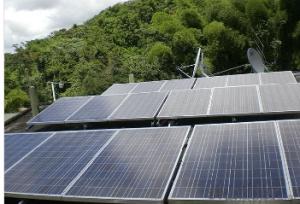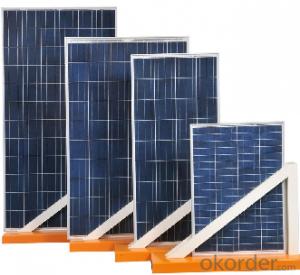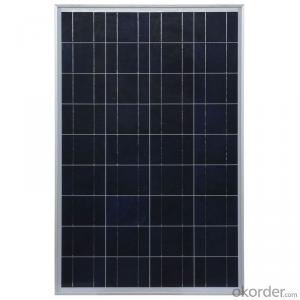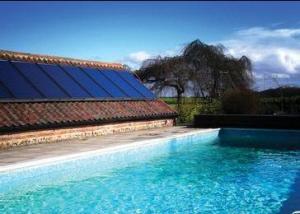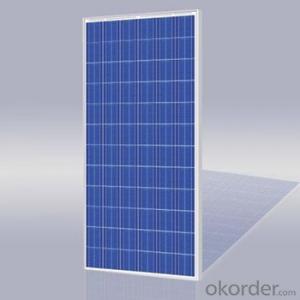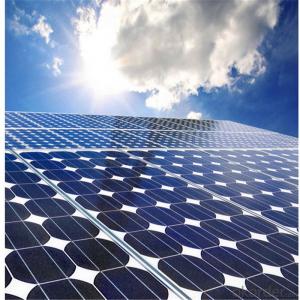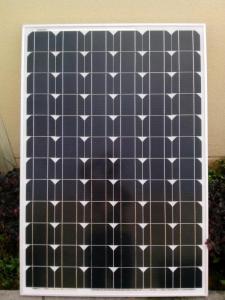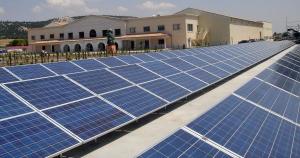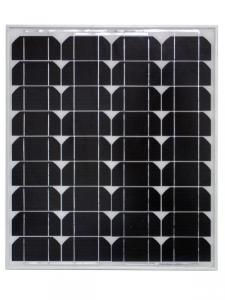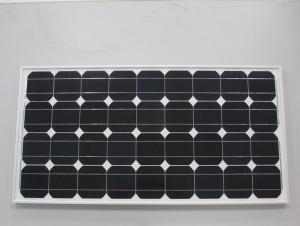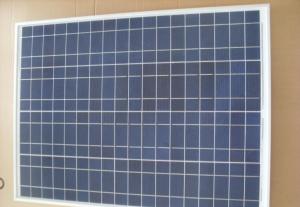Poly Solar Panels for Sale Albuquerque
- Loading Port:
- China Main Port
- Payment Terms:
- TT OR LC
- Min Order Qty:
- -
- Supply Capability:
- -
OKorder Service Pledge
OKorder Financial Service
You Might Also Like
Solar Module
ABOUT YINGLI GREEN ENERGY
Yingli Green Energy Holding Company Limited (NYSE: YGE) is one of
the world’s largest fully vertically integrated PV manufacturers, which
markets its products under the brand “Yingli Solar“. With over 7.0GW
of modules installed globally, we are a leading solar energy company
built upon proven product reliability and sustainable performance. We
are the fi rst renewable energy company and the fi rst Chinese company
to sponsor the FIFA World CupTM.
PERFORMANCE
- High effi ciency, multicrystalline silicon solar cells with high transmission
and textured glass deliver a module effi ciency of up to 16.0%,
minimizing installation costs and maximizing the kWh output of your
system per unit area.
- Tight positive power tolerance of 0W to +5W ensures you receive
modules at or above nameplate power and contributes to minimizing
module mismatch losses leading to improved system yield.
- Top ranking in the “TÜV Rheinland Energy Yield Test” and the
“PHOTON Test” demonstrates high performance and annual energy
production.
RELIABILITY
- Tests by independent laboratories prove that Yingli Solar modules:
Fully conform to certifi cation and regulatory standards.
Withstand wind loads of up to 2.4kPa and snow loads of up to
5.4kPa, confi rming mechanical stability.
Successfully endure ammonia and salt-mist exposure at the highest
severity level, ensuring their performance in adverse conditions.
- Manufacturing facility certifi ed by TÜV Rheinland to ISO 9001:2008,
ISO 14001:2004 and BS OHSAS 18001:2007.
WARRANTIES
- 10-year limited product warranty1.
- Limited power warranty1: 10 years at 91.2% of the minimal rated power
output, 25 years at 80.7% of the minimal rated power output.
1In compliance with our Warranty Terms and Conditions.
QUALIFICATIONS & CERTIFICATES
IEC 61215, IEC 61730, MCS, CE, ISO 9001:2008, ISO 14001:2004, BS OHSAS
18001:2007, PV Cycle, SA 8000
ELECTRICAL PERFORMANCE
Electrical parameters at Standard Test Conditions (STC)
Module type YLxxxP-29b (xxx=Pmax)
Power output Pmax W 260 255 250 245 240
Power output tolerances ΔPmax W 0 / + 5
Module effi ciency ηm % 16.0 15.7 15.4 15.1 14.8
Voltage at Pmax Vmpp V 30.3 30.0 29.8 29.6 29.3
Current at Pmax Impp A 8.59 8.49 8.39 8.28 8.18
Open-circuit voltage Voc V 37.7 37.7 37.6 37.5 37.5
Short-circuit current Isc A 9.09 9.01 8.92 8.83 8.75
Electrical parameters at Nominal Operating Cell Temperature (NOCT)
Power output Pmax W 189.7 186.0 182.4 178.7 175.1
Voltage at Pmax Vmpp V 27.6 27.4 27.2 27.0 26.8
Current at Pmax Impp A 6.87 6.79 6.71 6.62 6.54
Open-circuit voltage Voc V 34.8 34.8 34.7 34.6 34.6
Short-circuit current Isc A 7.35 7.28 7.21 7.14 7.07
STC: 1000W/m2 irradiance, 25°C cell temperature, AM1.5g spectrum according to EN 60904-3.
Average relative effi ciency reduction of 3.3% at 200W/m2 according to EN 60904-1.
NOCT: open-circuit module operation temperature at 800W/m2 irradiance, 20°C ambient temperature, 1m/s wind speed.
OPERATING CONDITIONS
Max. system voltage 1000VDC
Max. series fuse rating 15A
Limiting reverse current 15A
Operating temperature range -40°C to 85°C
Max. static load, front (e.g., snow) 5400Pa
Max. static load, back (e.g., wind) 2400Pa
Max. hailstone impact (diameter / velocity) 25mm / 23m/s
CONSTRUCTION MATERIALS
Front cover (material / thickness) low-iron tempered glass / 3.2mm
Cell (quantity / material / dimensions /
number of busbars)
60 / multicrystalline silicon / 156mm x 156mm / 2 or 3
Encapsulant (material) ethylene vinyl acetate (EVA)
Frame (material / color / anodization color /
edge sealing) anodized aluminum alloy / silver / clear / silicone or tape
Junction box (protection degree) ≥ IP65
Cable (length / cross-sectional area) 1000mm / 4mm2
Plug connector
(type / protection degree) MC4 / IP67 or YT08-1 / IP67 or Amphenol H4 / IP68
PACKAGING SPECIFICATIONS
Number of modules per pallet 29
Number of pallets per 40' container 28
Packaging box dimensions
(L / W / H) 1700mm / 1135mm / 1165mm
Box weight 568kg
Unit: mm
• Due to continuous innovation, research and product improvement, the specifi cations in this product information sheet are subject to change
without prior notice. The specifi cations may deviate slightly and are not guaranteed.
• The data do not refer to a single module and they are not part of the offer, they only serve for comparison to different module types
- Q: I know that if I put solar panels in my home I will get 30% back from the govt. Does that mean if I pay 2K I will get back around a 3K check? Or will my income play a roll where I may not get back as much?
- The energy credits are non-refundable. That means that they only reduce your existing tax liability. If the credit is more than your tax liability, the excess is lost. Examples: If your tax liability is $5,000 and you qualify for a $3,000 non-refundable credit, it reduces your tax liability to $2,000. If you had paid in $5,000, you would get a refund for $3,000. If you had paid in $3,000, you'd get a refund of $,000. If your tax liability was $2,000, a $3,000 credit would wipe it out and the other $,000 would be lost forever. If you had paid in $2,000, you'd get a refund for $2,000. If you had paid in $,000, you'd get a refund of $,000. BTW, check your math. 30% of $2k is not $3,000.
- Q: Can solar panels be installed in a desert environment?
- Yes, solar panels can be installed in a desert environment. In fact, deserts are often ideal for solar panel installations due to their high levels of sunlight and minimal cloud cover. The dry climate also helps to minimize dust buildup on the panels, making maintenance easier.
- Q: Can solar panels be installed on agricultural land?
- Yes, solar panels can be installed on agricultural land. In fact, it is a common practice to utilize agricultural land for solar energy projects. This dual use of land allows farmers to generate additional income from leasing their land for solar panel installations while continuing their agricultural activities. Moreover, solar panels can provide shade to crops, reduce water evaporation, and improve overall farm sustainability.
- Q: if car companies install solar panels on cars, like in all the car were the sun can reach that would reduce the consumption of gas in the summer, and might save some energy for winter and if that energy is not enough they can use gas or electricity i think that would be a lot of savings, and less contamination i don't know that is my idea what do you people think?
- Understanding Physics and something about electrical power is normally needed to solve this problem. Here is some info that may help put it into perspective: One average solar panel approx 3ft. X 4 ft may produce 00 watts of power during peak performance times. A VERY small car will require a minimum of say 0-30 HP to be viable. (An old VW had 40HP) 00 Watts continuously will produce about 0. HP (/0 of one HP), so to get 20 HP, I would need how many panels? About 0 panels to get one Horsepower? Where do I put them? note: ONE HORSEPOWER = 746 WATTS SOLAR IS GREAT, BUT NOT CHEAP AND NOT RELIABLE ENOUGH IN MOST AREAS TO DEPEND ON FOR NECESSITIES. IT IS VERY GOOD FOR SUPPLEMENTAL POWER USES AND CAN REDUCE OUR USE OF CONVENTIONAL FORMS.
- Q: I have a panel that quot;deep breatheproduces at 4% efficiency, what can it power, It's about 4ft by 2ft
- confident. this relies upon and the dimensions and performance of the image voltaic panel and the capability intake of the easy bulb. in case you % consistent capability whilst the solar isn't attainable, the panel must additionally be powering a financial business enterprise of batteries and capability drawn from them. My closest publicity to image voltaic panels turn right into a neighbor who took a single one with him tenting to capability a single fan. It did an excellent activity of airing his tent throughout the day so it did no longer warmth like an oven. This turn into an application the place the capability turn into in simple terms mandatory whilst the solar turn into shining. evaluate to windmills initially put in to pump water for livestock and retrofitted with electricity turbines *and* a storage battery. the ordinary use for the electrical powered energy turn into for listening to radio interior the evening, whilst the reception turn into extra effectual. The use with a battery somewhat than in simple terms for instantaneous capability is shown as being the norm somewhat than the exception in living house applications.
- Q: I have an electric bicycle that I travel to work by, pulling a modified child carrying trailer that holds two 2 volt deep cycle batteries in series to power the 24 volt bike motor. I'm thinking about adding a 50 watt solar panel (or larger depending on the room I can make available) to charge while I'm at work and to provide some extra juice while on my more distant travels.Can I get a solar panel to charge them while they're connected the way they are: in series? Does charging work that way?I've read that in order to charge the 24 volt battery setup (if the answer to the Q above is yes), the output from my solar panel would need to be a little more than 24 volts. Is this true? If so, how many volts?Since the bike is supposed to be powered at 24 volts and I have an x-volt (x gt; 24v) solar panel connected to it, will this cause any damage to the controller or other components while running them?Will it help supply power even while the motor is being run?Thanks.
- Charging voltage = 2*3.8 = 27.6V Current regulated to AH rating divided by 0 Charging time = 0 hours
- Q: Can solar panels be installed on a university campus or educational facility?
- Yes, solar panels can be installed on a university campus or educational facility. In fact, many universities and educational institutions have already embraced solar energy as a sustainable and cost-effective solution for their energy needs. Installing solar panels not only reduces the environmental impact of the facility but also provides an opportunity for hands-on learning and research in renewable energy for students and faculty. Additionally, it can help save on energy costs and provide a reliable source of clean energy for the campus.
- Q: Can solar panels be used to power a music festival?
- Yes, solar panels can be used to power a music festival. Solar panels can generate electricity from sunlight, which can then be used to power various electrical components such as sound systems, lighting, and other equipment required for the festival. By harnessing solar energy, music festivals can reduce their reliance on traditional power sources and contribute to a more sustainable and eco-friendly event.
- Q: Can solar panels be installed on a carport or parking lot?
- Yes, solar panels can be installed on a carport or parking lot. This is a popular option to utilize unused space and generate clean energy. It not only provides shade and protection to vehicles but also helps offset electricity costs and reduce carbon emissions.
- Q: How do solar panels affect the overall air quality of a building?
- Solar panels have a positive impact on the overall air quality of a building. By generating electricity from sunlight, they reduce the reliance on fossil fuels, which are major contributors to air pollution. This means that the emissions of harmful pollutants, such as carbon dioxide and nitrogen oxides, are significantly reduced. Therefore, solar panels help to improve the air quality by promoting cleaner and healthier environments.
Send your message to us
Poly Solar Panels for Sale Albuquerque
- Loading Port:
- China Main Port
- Payment Terms:
- TT OR LC
- Min Order Qty:
- -
- Supply Capability:
- -
OKorder Service Pledge
OKorder Financial Service
Similar products
Hot products
Hot Searches
Related keywords
